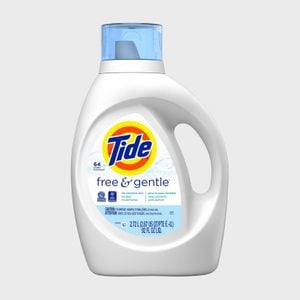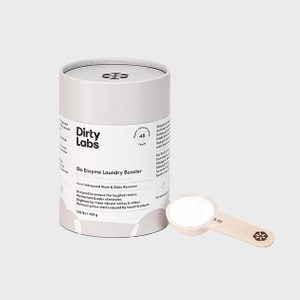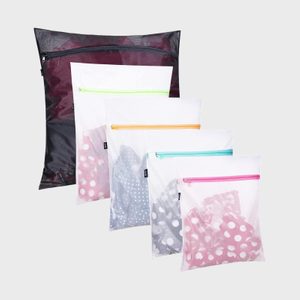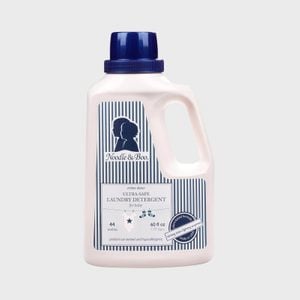How to Wash Wool Sweaters and Blankets So You Don’t Ruin Them
Updated: Mar. 11, 2024

You can easily care for your favorite sweaters and blankets without breaking the bank. Here’s how to wash wool the right way, according to laundry experts.
It’s that time of year again: We’re all trying to stay warm, whether we’re venturing outside or cuddling up inside. And there’s nothing more deliciously cozy than putting on your favorite wool sweater or burying yourself under a thick wool blanket. But reach for your best sweaters one too many times, and you’ll find yourself with a skyrocketing dry-cleaning bill. That’s probably one of the reasons you’re wondering how to wash wool at home.
Knowing exactly how to do laundry can be tricky, even if you’re hand-washing clothes. After all, there are different rules for different materials, such as silk or cashmere, and there’s an even bigger difference when learning how to wash white clothes, or cotton versus a material like wool. And should you dare to put your more delicate items in the washing machine?
We’re not leaving anything to chance. We spoke to laundry experts to find out how to wash wool safely, so you don’t have to worry about accidentally shrinking your beloved items or otherwise ruining them.
Get Reader’s Digest’s Read Up newsletter for more cleaning, travel, tech, humor and fun facts all week long.
Is it better to hand-wash or dry-clean wool?
It depends. You can absolutely hand-wash wool, and it can be a better option if you’re concerned about dry-cleaning chemicals, which can build up over time and decrease the life span of your items. But you should do it only if the care label on your garment or blanket says it’s OK. If the label says “dry-clean only,” head straight to a professional dry cleaner.
“Wool that is dry-clean-only likely has not been treated to make it washable and could shrink excessively,” says Jennifer Ahoni, Tide’s principal scientist. The manufacturer has also tested items with this designation in various wash settings and concluded via trial and error that dry-cleaning is required, adds Mary Gagliardi, Clorox’s in-house scientist and cleaning expert.
The dry cleaner is also your best bet if your item is sporting a stain. Professionals have “a wide variety of pre-treatment options to get a stain out without over-agitating” the item, which could cause shrinkage or other damage, says Gagliardi.
What if the label says “dry clean” without the “only”? Hand-washing may be allowed. “In that case,” Gagliardi says, “you could easily switch back and forth between hand-washing and dry-cleaning.”
Does wool shrink in the wash?
It certainly doesn’t have to! Garments made of wool are prone to felting, which is the technical term for wool that becomes matted or covered in those dreaded little balls of loose fibers. But, notes Ahoni, wool can be specially processed and/or blended with other fibers to make it hand- or machine-washable. That’s why it’s crucial to check the care label—it will give you a sense of whether a wool sweater has been treated for at-home care.
If the care label gives you the all-clear to wash your wool at home, you can either hand-wash or go ahead and toss it in the washing machine—as long as you take a few precautionary steps first. “If you can machine-wash a wool item, choose a cool or cold wash temperature and a gentle or delicate cycle,” says Gagliardi. “Some washers even have a ‘wool’ cycle, so this would be the time to use it.”
Just stay far away from too-hot wash temperatures, as well as the dryer. Heat is usually the culprit when it comes to shrinkage. Wool is one of the things that should never go in the dryer.
How often should you wash wool sweaters and blankets?

“If you do not have visible stains or noticeable odors on your wool sweaters, I would recommend washing every two to three wears,” says Ahoni. This is true even if you wear a T-shirt or base layer underneath, as sweat is invisible and can linger between fibers, transforming into odors over time. If you sweat while wearing your sweater, however, or have a visible stain on it, you should wash it immediately.
On the other hand, wool blankets should be washed less frequently. Ahoni recommends laundering them only once a season, or every three months, unless your item has gotten a lot of use or has noticeable odors or visible stains. It’s also a good idea to toss your blanket in the wash if the person using it has been sick.
“As wool fabrics are more prone to damage and shrinkage during the wash process, washing can accelerate the aging of the fibers and shorten the lifetime of a garment,” she cautions. “But if you don’t wash your garments frequently enough, you give more time for visible stains and invisible soils that cause odors to remain on fabrics, making them harder to remove and potentially permanent.”
How to hand-wash wool
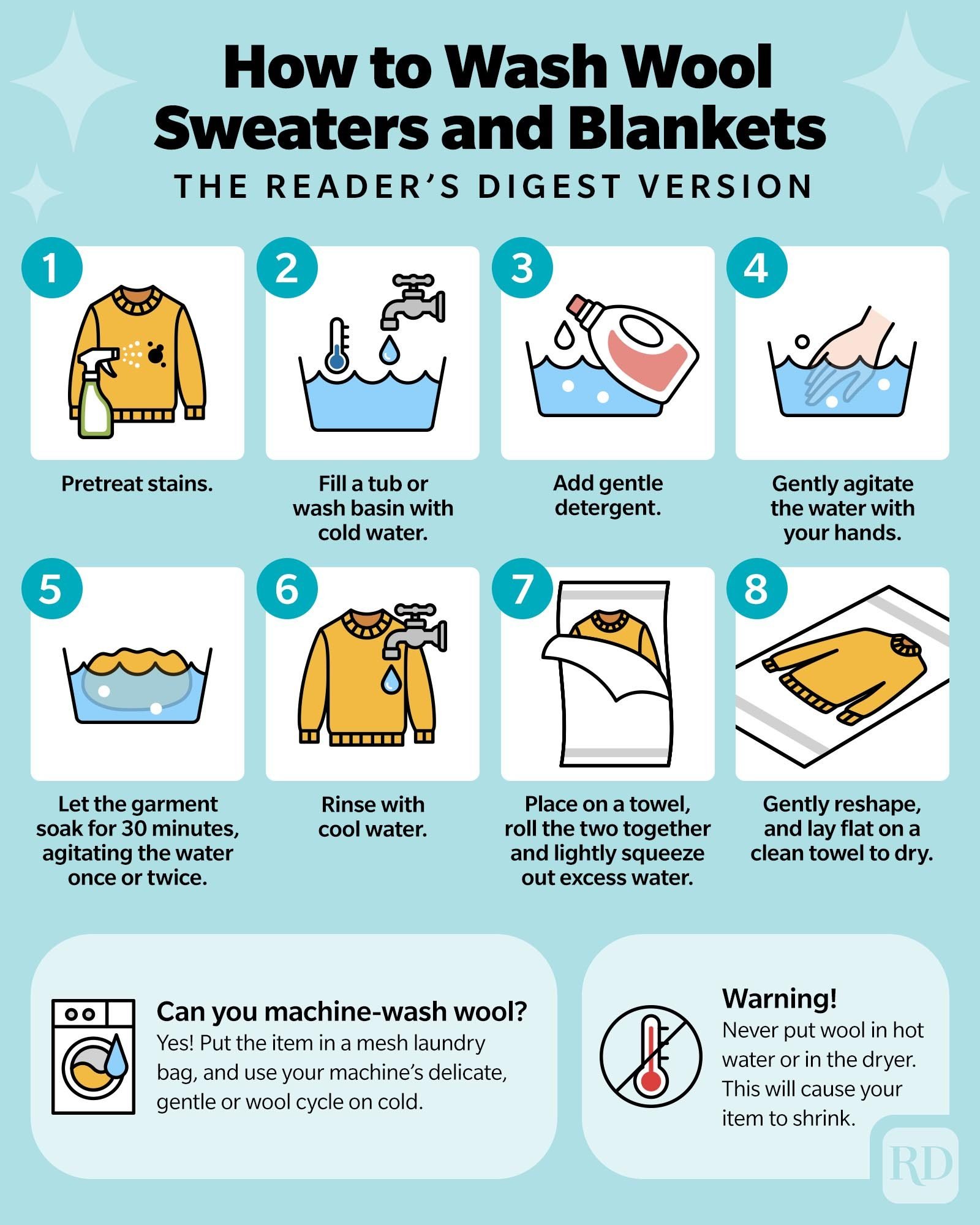
Hand-washing a wool sweater or blanket is relatively straightforward, says Hannah Yokoji, brand director at The Laundress. But each step is part of a larger strategy and should be executed carefully. Also make sure to use the best laundry detergent for the job.
- Pre-treat stains using a gentle spot treatment, like the Bio Enzyme Laundry Booster from Dirty Labs. Gently work it into the fabric with your fingers or a stain brush until the stain breaks apart, then rinse away the lather.
- Fill a tub or wash basin with cold water.
- Add 0.5 to 1 ounce of wool-specific shampoo, like this one from Steamery, or another gentle liquid detergent.
- Gently agitate the water with your hands to ensure that the detergent is evenly distributed.
- Let the garment soak for 30 minutes, agitating the water (not the sweater/blanket) once or twice during the soaking process to encourage buildup to release from the fabric.
- Rinse with cool water until bubbles stop coming out (usually about a minute). Avoid wringing or twisting the fabric.
- Gently reshape, and lay flat to dry.
How to wash wool in a washing machine
“Always check the care label first to determine if the garment can be machine-washed,” says Ahoni, who adds that it will usually say “machine-washable” on the tag. Alternatively, if you spot the machine-wash symbol, that’s also your clearance for tossing it in the machine. Once you’ve established that the sweater or blanket is machine-washable, says Ahoni, here’s how to wash wool in a washing machine.
- Pre-treat any stains and odors with a gentle liquid detergent. Gently apply the stain remover in small, circular motions on the affected spot until it’s fully absorbed. Without rinsing off the detergent, soak the item in a tub or bucket of cold water for 10 minutes. Then place it in the washing machine. (If your item doesn’t have any stains or odors, skip to Step 2.)
- Place your wool sweater or blanket into a large mesh laundry bag for extra safety and to prevent snags.
- Wash the garment by itself using a delicate, gentle or wool cycle (if your machine has one) in cold water.
- Add a mild detergent that was formulated specifically for gentle cycles, like Tide Free & Clear or Noodle & Boo Ultra-Safe Baby Laundry Detergent. Do not use fabric softener, as this can promote felting.
- Remove the wool item from the washing machine immediately after the cycle ends.
- Lay flat to air-dry, and reshape as needed.
How to dry wool sweaters
Rule No. 1 of washing wool at home: Always let it air-dry. “Tumble-drying promotes felting because the sweater is wet, the dryer is warm and there’s agitation,” explains Gagliardi. “Even in a cool dryer, a wool item can still shrink and felt.” Instead, she suggests rolling a wet sweater, even one coming out of a gentle cycle in the washer. Here’s how to do that properly:
- Place a clean, dry towel on the floor.
- Set the sweater in the center.
- Take one corner of the towel and roll it diagonally toward the other corner, lightly squeezing out excess water in the process.
- Next, lay the item flat on a clean, dry towel. (Never hang a wet sweater to dry—the weight of the wet garment will cause it to lose its shape.)
- Let it air-dry fully.
Mistakes to avoid when washing wool
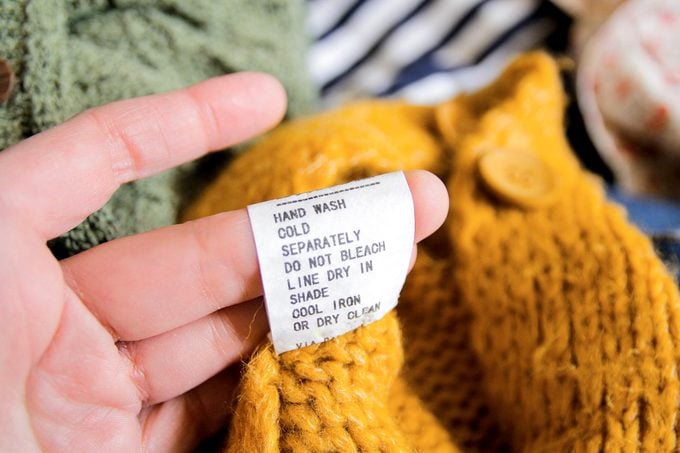
- Not reading the care label. This is a guaranteed one-way ticket to shrinkville. Although most sweaters are made of wool blends and have been tested by the manufacturer to be safe for hand-washing and/or machine-washing, it’s still a good practice to double-check, because once a top shrinks, there’s not much than can be done.
- Wringing or twisting wool. Another huge no-no is to overly manipulate the item during the hand-washing and rinsing steps, as it causes the fibers to stretch and lose their shape.
- Subjecting wool to heat. Heat is what causes wool to shrink, and so heated anything—water, air—should be avoided when washing wool. Protect your wool sweaters by always washing them in cold water, then letting them air-dry.
- Not using the gentle cycle when machine-washing. Make sure to use the gentlest setting possible when washing wool in a washing machine, because over-agitation will promote felting. A super-fast spin cycle can also cause the fibers to become loose and stretch out over time.
- De-pilling when wet. Only de-pill wool items when they are dry, preferably before the washing process. This will prevent snagging and potential damage.
Sources:
- Jennifer Ahoni, principal scientist at Tide
- Mary Gagliardi, in-house scientist and cleaning expert at Clorox
- Hannah Yokoji, brand director at The Laundress



















